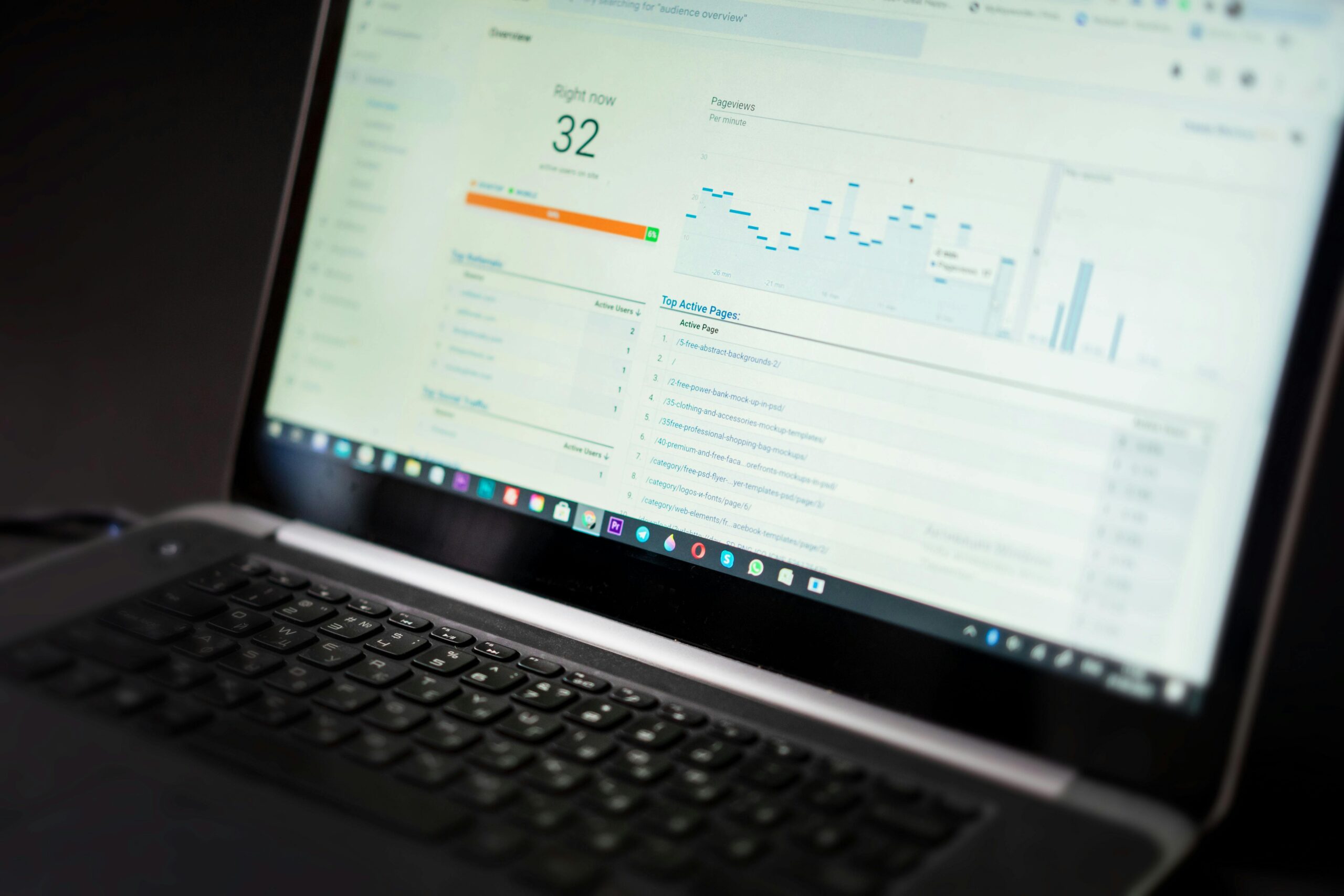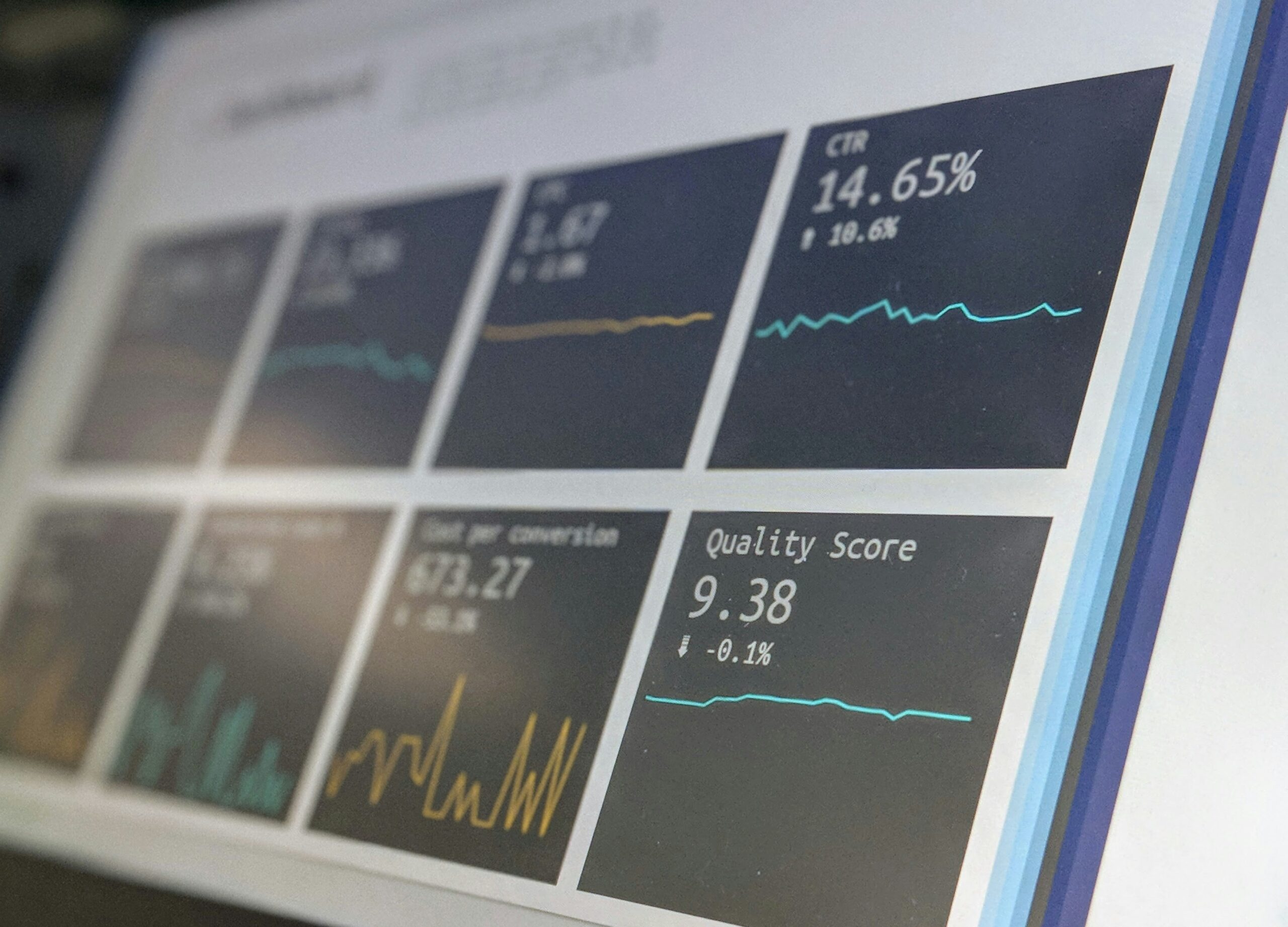Mastering the intricacies of SEO keyword difficulty is a game changer in the realm of digital marketing. A striking statistic from a Backlinko study reveals that the first page of Google captures a staggering 71% of search traffic clicks, with recent reports suggesting this figure could be even higher.
This underscores the paramount importance of understanding and strategically leveraging keyword difficulty to propel your website’s content onto that coveted first page. By meticulously calculating and optimizing for SEO keyword difficulty, websites can significantly increase their visibility, drive more organic traffic, and assert dominance in their niche.
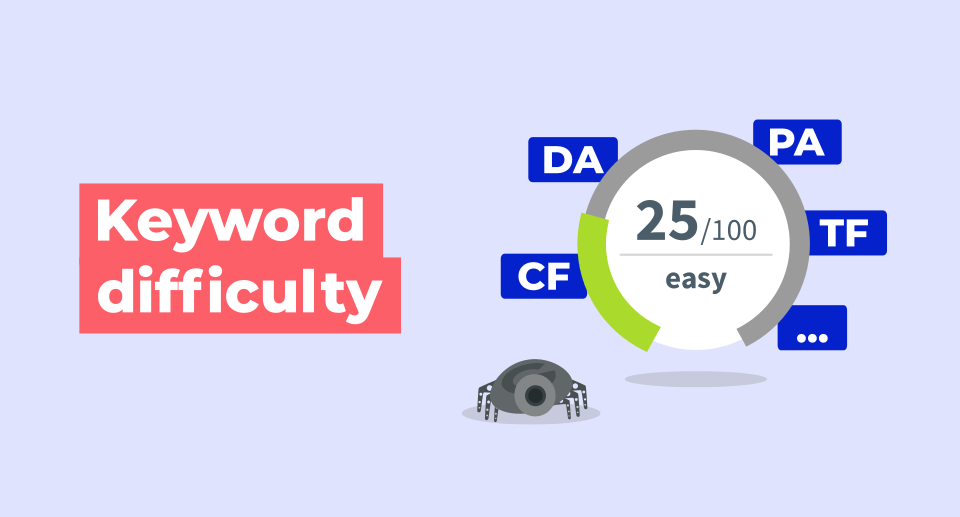
Defining Keyword Difficulty In SEO
Keyword difficulty is an SEO metric that indicates how challenging it is to rank for a particular search term. Understanding this concept is critical for any digital marketer or website owner aiming to optimize their content in the complex terrain of search engine rankings. By grasping the nuances of keyword difficulty, you can better prioritize your SEO efforts and select keywords that balance search volume and competition.
Calculations Behind Keyword Difficulty Scores
Keyword difficulty scores culminate in various metrics, and understanding their calculation is crucial for effective SEO planning. The process includes:
- Assessing Domain Authority (DA): Analyzing competing domains’ DA offers insight into the strength of their web presence, which correlates to their search ranking potential.
- Evaluating Backlink Profiles: The quantity and quality of backlinks to competing content can significantly influence rankings, representing a factor in the difficulty score.
- Accounting for Ranking Tenure: How long pages have held their ranking positions can indicate their competitive stability and the challenge of dislodging them.
- Incorporating Search Volume Data: High search volumes can inflate difficulty, as they often signal more competitors vying for the top spots.
- Considering Trend Analysis: How keyword popularity shifts over time can help predict future competitiveness and difficulty.
- Final Scoring: The combined data results in a difficulty score, typically on a 0-100% scale, representing the challenge ranking level for a keyword in current conditions.
Characteristics Of Easy vs Hard Keyword Difficulty
Navigating the spectrum of SEO keyword difficulty is paramount to formulating a winning SEO strategy. Keywords can be classified broadly into two types based on their difficulty: easy and hard. Both ends of the spectrum present unique challenges and opportunities.
Understanding this distinction is crucial for SEO professionals looking to craft content that competes effectively in the search engine results pages (SERPs), ensuring alignment with your resources and goals.
- Easy = Minimal competing domains with high relevance
- Moderate = Est. 30-70% difficulty for realistic rankings
- Hard = Highly authoritative sites, 200%+ difficulty
Let’s make this simple- Imagine you’re in a big library and must choose a book to read. You want the book to be interesting but not too hard to understand. SEO keyword difficulty is a lot like picking the right book.
If a book is very popular and all the older kids are reading it, it will be hard for you to get it from the library—that’s like a “hard” keyword because lots of people (or websites) want to be found for this keyword.
Now, if a book isn’t as popular, and it’s just right for your reading level, it will be easier for you to get it—that’s an “easy” keyword because not as many people are trying to find it. So, when we make websites, we try to find the best “books” (or keywords) so that our website gets picked a lot by people using Google, just like how you’d like to find the best book in the library to enjoy reading.
Keyword Difficulty vs Paid Keyword Difficulty
When unraveling the concept of keyword difficulty, it’s critical to differentiate between SEO keyword difficulty and paid keyword difficulty, as they each play distinct roles within digital marketing strategies.
- Paid Keyword Difficulty: This metric is linked directly to pay-per-click (PPC) advertising campaigns. It gauges the level of competition and the cost of securing a top position for a keyword in paid search results. Businesses bid against each other, and the difficulty reflects how much advertisers are willing to pay for a keyword, influencing ad placement and price.
- SEO Keyword Difficulty: Unlike the paid counterpart, SEO keyword difficulty focuses on organic search results. It evaluates the intricacies of achieving higher rankings in SERPs without paying for placement. SEO difficulty measures multiple factors, such as ranking pages’ authority and link profiles, to estimate the effort needed to rank organically for a specific term.
- Distinct Signals: While there is some crossover in the signals used to determine SEO and paid keyword difficulties, each has a unique focus. Organic rankings are influenced by content quality, backlinks, and domain authority, among others. In contrast, paid rankings rely more on bid amounts, the relevance of ad copy, and the landing page experience.
Understanding the variations between these two types of keyword difficulty is essential for marketers to allocate their efforts and budget effectively, whether aiming for organic authority or immediate visibility through paid ads.
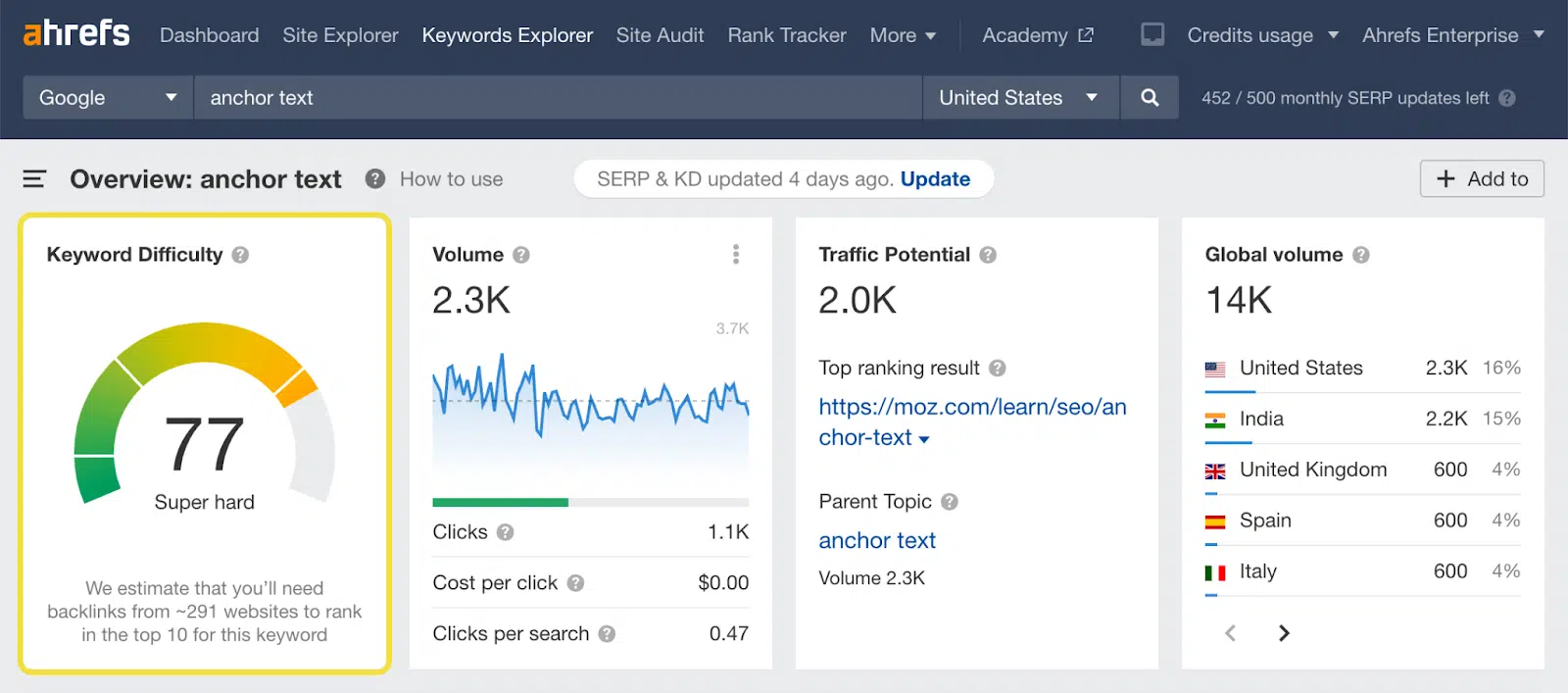
How To Calculate Your Exact Keyword Difficulty
Calculating the exact keyword difficulty for your targeted search terms is an art and a science. Gaining precision in this area requires a methodical approach that combines the insights from the factors mentioned earlier. In the next section, we will delve into a step-by-step methodology that demystifies this complex process, ensuring you’re equipped to strategically select keywords that are within reach and offer the greatest potential for your SEO campaigns.
Tools To Check Keyword Difficulty Scores
To effectively determine the keyword difficulty, follow this concise step-by-step guide, which uses the various tools and metrics previously discussed. Here’s how to go about it, ensuring the process is straightforward and easily skimmable.
Initial Assessment With Ahrefs
Begin by leveraging Ahrefs‘ robust difficulty score checker, designed to provide an immediate and accurate competitive landscape assessment. But don’t stop there—dive deeper into key metrics like Domain Authority (DA) to uncover the formidable prowess of your competitors.
Backlink Profile With SEMRush:
By employing SEMRush, analysts can gain valuable insights into the backlink profiles that influence keyword difficulty. Through careful examination of both the number and quality of backlinks that top-ranking pages have secured, you can gauge the level of effort required to compete. This approach can help you develop a link-building strategy that is measured, relevant, and potentially effective in improving your website’s ability to rank for targeted keywords.
Historical Data Review With Moz
When evaluating your exact keyword difficulty, it’s vital to consider historical data and the staying power of competing pages within SERPs. Utilizing Moz allows you to dive into a site’s ranking tenure and its domain authority, offering a clearer picture of the competitive field.
By understanding the longevity of your competitors’ rankings, you can better strategize to achieve and maintain a strong position for your chosen keywords.
Search Volume Analysis With Google Keyword Planner
Google Keyword Planner is a pivotal tool for examining search volume and understanding the popularity of your keywords. High search volumes can signal stiffer competition, necessitating a strategic approach to your SEO efforts.
Trend Consideration
When assessing keyword difficulty, trend consideration is paramount, giving insight into how keyword popularity may shift and affect competition. Sources like Google Trends provide valuable data, guiding you through these changes to refine your SEO strategy.
A nuanced understanding of trends is essential, as it can influence both the short-term relevance and the long-term efficacy of your selected keywords in driving traffic.
Final Synthesis
By methodically walking through these steps with the aid of well-known SEO tools, you can strip away the complexities of keyword difficulty, breaking it down into actionable insights that will inform your content and SEO strategy.
Manual Keyword Difficulty Analysis
Understanding keyword difficulty is crucial for SEO, but not all marketers can access premium tools. Here’s a simple way to manually assess keyword difficulty, allowing you to make informed decisions without the need for expensive subscriptions:
Competing Pages Inspection:
Inspecting the competing pages in SERPs for your desired keyword is a vital component of manual keyword difficulty analysis. Assess each top-ranking page with a critical eye—evaluate how well the content addresses the search query, the overall quality of the information presented, and the user experience. A comprehensive understanding of these factors is instrumental in creating content that can outrank the competition.
Domain Evaluation:
Evaluating the domain strength of competing pages is an insightful step in manual keyword difficulty analysis. The Domain Rating (DR) and Domain Authority (DA) metrics indicate a website’s credibility and can be checked utilizing free tools or browser extensions. Additionally, thoroughly investigating inbound links to these pages will clarify your potential challenges when vying for top rankings.
Organic Traffic Analysis:
Organic traffic analysis offers insights into the performance of top-ranking pages for your targeted keywords. By estimating the volume of organic visitors, you can understand the true allure of these pages and predict the potential traffic your site could gain. Free SEO tools may provide limited features to assess this, but even a cursory look at traffic estimates can be invaluable for gauging your competition’s success and setting realistic targets for your own SEO strategy.
Google SERP Features:
Analyzing Google SERP Features is integral to keyword difficulty assessment; by exploring features such as Suggest and Autocomplete, you gain insights into Google’s perception of relevance for user queries. These features reflect prevalent search trends and provide context that can help fine-tune your SEO strategy. Understanding what Google prioritizes allows you to tailor your content to align with potential keyword modifier opportunities and user intent signals.
Google Trends Assessment:
Utilizing Google Trends to examine the historical performance of your keywords allows you to discern any recurring patterns or seasonal variances in their popularity. This analysis can reveal valuable insights about shifts in user interest over time, helping you to predict future keyword relevancy. By strategically considering these trends, you can optimize your content calendar to align with periods of heightened search interest, maximizing visibility and traffic.
These hands-on tactics provide valuable insight into the keyword landscape, allowing for budget-friendly yet effective SEO strategy planning.
Indicators Impacting Your Keyword Difficulty
Breaking down keyword difficulty into actionable insights involves evaluating several critical indicators. Here’s a brief look at what to consider when assessing the competitive landscape:
Mind Your Business Newsletter
Business news shouldn’t put you to sleep. Each week, we deliver the stories you actually need to know—served with a fresh, lively twist that keeps you on your toes. Stay informed, stay relevant, and see how industry insights can propel your bottom line.
Subscribe to Mind Your Business
- Domain Authority (DA): This reflects the overall site’s strength in search rankings, influenced by factors like the number and quality of backlinks. A higher DA can mean tougher competition.
- Page Authority (PA): Look at the relevance and optimization of individual pages that rank for your keyword; these are often tailored to rank well for the target search term.
- Link Velocity: Analyze the pace at which new backlinks are gained. A swift accumulation can indicate a concerted effort to boost SEO and might affect ranking ability.
- Ranking History: Understanding the stability of page rankings over the last 1-2 years can provide perspective on how entrenched competitors are in their positions.
Focusing on these indicators can help you gauge the difficulty you may face when attempting to rank for certain keywords and prioritize your SEO efforts more effectively.

Optimizing Content For Higher Keyword Difficulty Rankings
Content optimization is the key to climbing the search engine ladder in highly competitive keyword arenas. Mastering this craft means tailoring your content to satisfy user intent and outshine well-established competitors.
Core On-Page Factors to Improve
Optimizing your content for competitive keywords means enhancing several on-page elements to meet and surpass existing benchmarks. Here’s a quick, skimmable rundown of the core factors:
- Content Volume and Quality: Strive for a comprehensive word count that delves deep into the subject, signaling your content’s thoroughness to search engines.
- Expertise and Topic Coverage: Offer nuanced, expert insight into the topic, covering all facets comprehensively to establish authority.
- Optimized Media Use: Incorporate pertinent images, videos, and infographics optimized for size and SEO, enriching the user experience.
- Strategic Internal Linking: Create a web of links to other relevant content on your site, using descriptive anchor text that helps search engines understand context.
- Anchor Text Precision: Ensure optimal anchor text distribution at 2-3%, avoiding over-optimization while maintaining contextual relevancy and keyword focus.
Research Current Top Results’ Strengths
A meticulous review of the top results is imperative to successfully navigate the competitive landscape of high keyword difficulty rankings. Here’s a concise guide to identifying where you can outdo the top performers:
Deconstruct Their Strengths:
Look beyond their strengths to uncover any weaknesses. Potential areas of vulnerability could include gaps in content, lack of topic specificity, insufficient multimedia, or inadequate use of internal links. By pinpointing and addressing these shortcomings in your own content, you can create a competitive edge and improve your chances of ranking higher.
Spot Optimization Gaps:
Analyze the top results to pinpoint where your offerings can be more robust or detailed. Assess their internal linking strategies and keyword usage to find weak spots that your content can better optimize. Addressing these areas can be pivotal in differentiating your content and achieving a higher ranking in search engine results pages (SERPs).
Set Priority Focus Areas:
Your content should aim to increase dwell time through compelling material and optimize user experience to reduce bounce rates. Additionally, incorporating elements that encourage click-through, such as clear calls to action, can improve the overall metrics that search engines consider when ranking pages.
This strategic approach pinpoints direct action items to enhance your content’s competitiveness on SERPs.
Promoting New Content For Indexation
Mastering content optimization amidst a highly saturated keyword field is vital. Start by enriching your on-page elements such as content volume, expertise, multimedia integration, internal linking, and precisely measured anchor text use.
Next, research and deconstruct the strengths of current top performers to identify opportunities where your content can provide additional value or better optimization. Finally, ensure your new content gets the attention it deserves with timely link-building, indexing requests, and strategic social sharing to boost engagement and SERP positioning.
These succinct steps sharpen your content’s edge, making it more skimmable and actionable for SEO success.

Building Backlinks To Boost Keyword Difficulty Performance
Acquiring quality backlinks is a cornerstone of improving your site’s ability to compete for difficult keywords. A deliberate and strategic backlink campaign can significantly improve your search engine rankings.
Link-Building Tactics To Increase Domain Authority
The role of backlinks in elevating your website’s ranking for competitive keywords cannot be overstated. Quality backlinks from credible sources are a testament to the trustworthiness and authority of your content. Below, we outline strategic link-building tactics designed to increase your site’s Domain Authority (DA), boosting your performance amidst high keyword difficulty competition.
Strategic Guest Posting Outreach
Engaging in strategic guest posting is a potent tactic for acquiring high-quality backlinks and improving domain authority. By contributing valuable content to reputable websites within your industry, you gain exposure to their audience and establish your brand as a thought leader. High-quality guest posts can attract natural backlinks and increase the likelihood that the hosting site will link back to your own, adding credibility and a potential boost in search engine rankings.
Content Promotions Through Influencers
Leveraging influencers for content promotion can amplify your reach and attract backlinks from new and diverse sources. With their vast reach and trusted opinions, influencers can introduce your content to a larger audience. When they share your content, it’s not just visibility that you gain; you received the added bonus of backlinks from various platforms, which can enhance the perceived value and authority of your content by search engines.
Resource Link Roundup Submissions
Resource link roundups are curated lists of valuable content on specific topics, typically posted on blogs or websites regularly or periodically. Submitting your content to websites that run these roundups can get your link featured among other top resources, leading to increased traffic and backlink accumulation. This tactic taps into the website’s existing audience, offering a direct line to interested readers already seeking top-notch information.
Niche Link Insertions And Placements
Niche link insertions involve placing your website’s link within another website’s content in a way that appears natural and adds value to that content. This practice can help improve your site’s relevance to specific keywords and is often seen favorably by search engines. By targeting websites within your niche, you can gain backlinks that boost domain authority and drive traffic from a highly targeted audience likely to engage with your content.
Relevant Web 2.0 And PBN Links Over Time
Creating web 2.0 profiles on platforms such as WordPress, Blogger, or Tumblr and generating content with links to your site can be effective for backlinking. However, this should be done cautiously and authentically to avoid penalties. Similarly, using Private Blog Networks (PBNs) may offer short-term gains in rankings, but it’s a risky strategy that can result in long-term damage if not managed properly. It’s essential to ensure these links’ quality and relevance and build them gradually over time to mimic natural link growth.
Monitoring Link Metrics And Velocity
Monitoring the progress of your link-building efforts is critical to understand the impact on your SEO performance. Analyzing link metrics and velocity ensures that your backlink profile develops steadily and aligns with your strategic goals.
- Track overall referring domains gained: Measure the increment in unique domains that link back to your site to assess the growth and expansion of your backlink profile.
- Prioritize links from high DA/DR sites: Focus on obtaining backlinks from websites with high Domain Authority (DA) or Domain Rating (DR), as these greatly influence your site’s authority and trustworthiness in the eyes of search engines.
- Calculate domain authority growth: Regularly check for increases in your site’s domain authority due to your link-building activities, indicating a positive shift in your site’s perceived value.
- Set targets for monthly link velocity: Establish clear objectives for the rate at which you intend to acquire new backlinks each month to maintain momentum and avoid any unnatural spikes in link acquisition that search engines could flag.
Promoting Assets To Earn More Backlinks
Earning more backlinks is a multifaceted endeavor requiring strategically promoting your site’s most valuable assets. Below, we break down the steps to take your content and make it irresistible to linkers, thus serving your broader SEO strategy.
- Identify top recent content to pitch: Seek out your most engaging and recent posts or pages likely to attract attention and encourage shares and links.
- Create link-worthy assets like tools, and data studies: Develop and refine unique resources such as interactive tools or insightful data studies that provide high value and are highly shareable.
- Distribute to appropriate blogger and media outlets: Share your content and linkworthy assets strategically with targeted bloggers and media platforms relevant to your niche.
- Develop a tiered outreach strategy for awareness: Implement a structured approach to outreach, focusing first on high-value targets and then cascading down to broader audiences for maximum backlink potential.
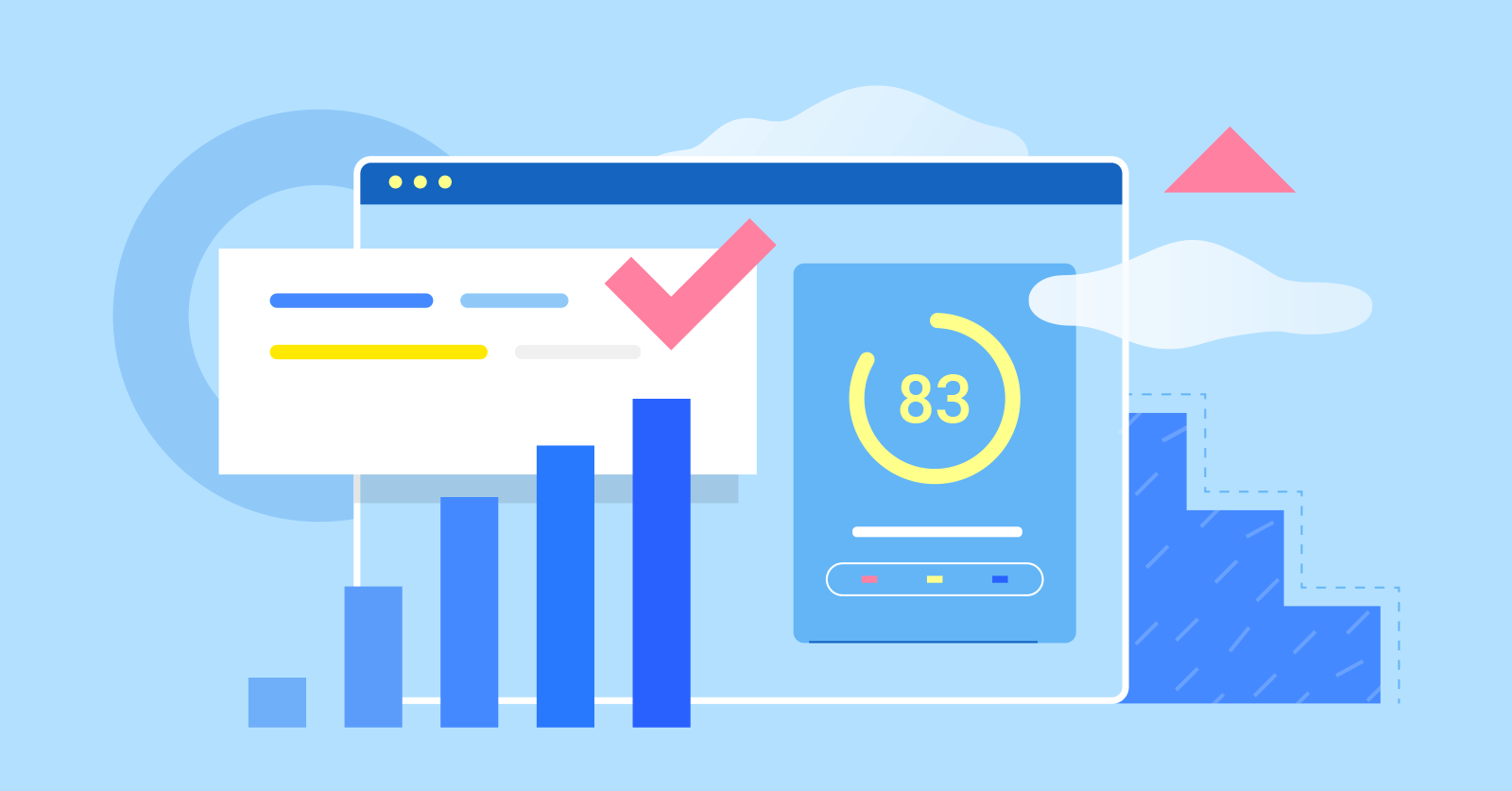
Proven Tactics To Boost Your Overall SEO Score
Maximizing your SEO score is crucial for achieving higher search engine rankings and drawing in qualified traffic that can convert to actual sales and leads. To this end, a combination of proven SEO tactics can be leveraged, each designed to optimize your website’s performance.
From on-page optimization and technical SEO to creative content marketing and strategic keyword targeting, this section will explore practical and actionable strategies for fortifying your website’s SEO health, elevating your online presence, and giving you a competitive edge in the digital marketplace.
Most Impactful Quick Wins To Improve SEO Scores
In the ever-evolving landscape of search engine algorithms, securing a top-notch SEO score is both a challenge and a necessity for digital success. Let’s delve into some quick, impactful strategies that can significantly improve your website’s SEO metrics with immediate benefits.
- Optimizing page speed elements for faster load times: Enhance the user experience by reducing the time it takes for your pages to load, using tools to compress images, and leveraging browser caching.
- Improving site crawlability and indexing performance: Remove crawl blocks in your robots.txt file and ensure that search engines can easily navigate and categorize your website, facilitated by a logical structure and error-free code.
- Creating XML sitemaps for clearer content discovery: Provide search engines with an XML sitemap, which acts as a roadmap to all your important pages, ensuring they are discovered and indexed promptly.
- Adding alt text and captions to imagery: Descriptive alt text and captions strengthen the SEO value of your visual content, aiding in image search visibility and accessibility for users with screen readers.
Longer-Term SEO Score Optimization Goals
Achieving a top-tier SEO score is a marathon, not a sprint, requiring ongoing and dedicated efforts. Let’s zero in on sustainable practices that enhance SEO rankings and contribute to the website’s long-term success.
- Produce monthly technical SEO audits: Regular, detailed audits allow for the timely identification and rectification of technical issues that could impede search engine performance.
- Develop rolling content optimization roadmaps: A living document that outlines step-by-step plans to continuously improve content ensures your website remains relevant and authoritative.
- Expand domain authority and backlink profile: A broader domain authority signifies your website’s importance, which can be increased through strategic backlink acquisition and quality content.
- Cultivate user engagement signals: Boost your website’s appeal to search engines by fostering user interactions such as longer visit durations, frequent returns, and high click-through rates.
Tracking SEO Score Improvements Over Time
Understanding the impact of your SEO efforts hinges on effective tracking and analysis. This involves setting benchmarks and using various tools to observe tangible progress.
- Establish internal SEO scorecard baselines: Begin by setting up customized scorecards that reflect your website’s initial SEO status. These scorecards will help you track incremental improvements and guide strategy refinement.
- Regularly test via Google PageSpeed, Moz, SEMRush: Employ established SEO tools like Google PageSpeed, Moz, and SEMRush to conduct routine performance assessments, ensuring your tactics align with best practices and industry standards.
- Monitor percentile ranking increases vs. competitors: Closely observe how your website’s rankings fare against competitors, aiming for increased percentile positions for key search queries over time.
- Measure conversions generated from organic traffic: Quantify the effectiveness of your SEO strategy by tracking the number and quality of conversions attributed to organic search traffic, aligning with your business objectives.

Conclusion: Securing Your Website’s SEO Future
The journey toward SEO excellence is complex and multifaceted, blending technical precision with creative flair. By focusing on immediate and long-lasting strategies, you can pave the way toward a future where your website not only ranks higher but also delivers memorable user experiences. Every action contributes to your website’s grand narrative in the digital ecosystem, from optimizing on-page elements to strategic networking for backlink acquisition.
Remember, SEO is not a one-time endeavor but a continuous commitment to excellence and adaptation in an ever-changing online landscape. By monitoring your progress, staying informed on algorithm updates, and remaining responsive to analytics, you are setting up your digital presence for enduring success and visibility.
